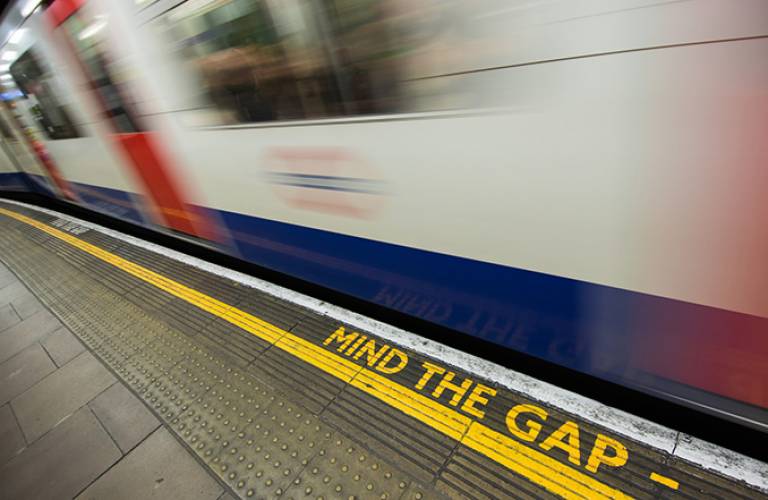Senceive: Innovative remote condition monitoring solutions for the rail and construction industries

14 December 2014
UCL spinout company Senceive Ltd provides wireless-enabled remote condition monitoring solutions to the railway and construction industries enabling them to monitor their valuable and often difficult-to-access infrastructure assets. The company's innovative products deliver substantial cost savings for contractors on projects, which have included Crossrail and tunnelling work on the London Underground.
Wireless-enabled remote conditioning monitoring solutions originally developed by UCL researchers and which have been commercialised through a university spinout company, are now widely used by customers including Amey, Costain, Network Rail and Tubelines.
The underpinning research was carried out between 2003 and 2005, when Dr Lionel Sacks and Dr Matthew Britton from UCL Electronic & Electrical Engineering collaborated on a project which sought to understand how a distributed network of smart sensors could be configured such that it would be able to automatically adapt to failures, upgrades and requirement changes. The research developed an innovative integration service layer (ISL), which consisted of a lightweight operating system and modules for interfacing between the sensors, communications layers and processing systems.
The research project showed that it was feasible to combine the UCL ISL with inexpensive off-the-shelf hardware and software components in order to provide a wireless-enabled asset-monitoring solution that had potential for use in a broad range of environmental and industrial monitoring applications. Early prototypes proved cost-effective and robust, and Senceive was formed in 2005 to translate the technology into a commercial product.
Senceive's Flatmesh product range, which launched in 2009, provides an extremely robust, reliable and easy-to-deploy asset monitoring solution. Flatmesh enables the owners of geotechnical, rail and construction infrastructure to accurately and efficiently monitor their assets, and is much more cost-effective than alternatives such as manual monitoring, wired solutions or emerging technologies such as fibre optics. The innovative nature of Senceive's monitoring products has been widely recognised, with multiple nominations for industry awards and successes including a high-profile Tunnelling Product Innovation Award in 2012.
A good example of how Flatmesh has successfully addressed an unmet geotechnical monitoring need was seen in 2011 on a project at Bond Street underground station. The station was at the early stages of a £300 million redevelopment to increase capacity, improve accessibility and create an interchange with Crossrail. A highly flexible, safe and reliable system was needed to monitor movement within existing tunnels during grouting remediation works, to mitigate potential risks to personnel and tunnelling infrastructure. Senceive's high-resolution wireless tilt meters were mounted on tunnel lining segments using novel magnetic fixings, with movements displayed on Senceive's Webmonitor software. The Senceive solution saved an estimated £1 million compared to conventional techniques.
Other deployments have included a major tunnel re-lining project in 2012/13 on the Jubilee Line between Bond Street and Baker Street. Tubelines contracted Senceive because of the company's unique ability to satisfy the challenging project-monitoring requirements imposed by remedial works that needed to be undertaken efficiently during limited periods (evenings and selected weekends) when trains did not run.
Since 2012, Amey has used Senceive's solutions to deliver a structural monitoring capability for their UK-wide Civil Examination Framework Agreement contract for Network Rail. Senceive also secured a major contract in 2013 with Canary Wharf Contractors to provide an underground tunnel monitoring system on the Northern and Bakerloo Lines, as part of the Shell Centre re-development project on London's South Bank. Here, Senceive's solution displaced competing monitoring approaches ranging from laser-based electronic theodolites (feasibility issues due to space constraints), fibre-optics (expensive and unproven) and wired solutions (expensive and inflexible).
Overall, it is widely recognised that the use of Senceive's wireless remote asset monitoring platform by partners such as Amey, Costain, Morgan Sindall and Getec (part of the Keller Group) can enable these contracting companies to secure competitive advantages when tendering for construction and maintenance contracts both in the UK and overseas.
Senceive's turnover has risen consistently over the past three years, and in the financial year to October 2014, the company generated revenues of around £750,000 and now retains 12 staff from offices in London.
 Close
Close

